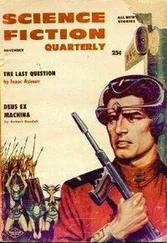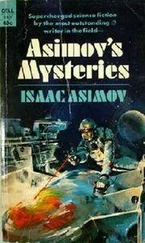Isaac Asimov - Asimov’s Guide To Shakespear. Volume 1
Здесь есть возможность читать онлайн «Isaac Asimov - Asimov’s Guide To Shakespear. Volume 1» весь текст электронной книги совершенно бесплатно (целиком полную версию без сокращений). В некоторых случаях можно слушать аудио, скачать через торрент в формате fb2 и присутствует краткое содержание. Жанр: Культурология, на английском языке. Описание произведения, (предисловие) а так же отзывы посетителей доступны на портале библиотеки ЛибКат.
- Название:Asimov’s Guide To Shakespear. Volume 1
- Автор:
- Жанр:
- Год:неизвестен
- ISBN:нет данных
- Рейтинг книги:4 / 5. Голосов: 1
-
Избранное:Добавить в избранное
- Отзывы:
-
Ваша оценка:
- 80
- 1
- 2
- 3
- 4
- 5
Asimov’s Guide To Shakespear. Volume 1: краткое содержание, описание и аннотация
Предлагаем к чтению аннотацию, описание, краткое содержание или предисловие (зависит от того, что написал сам автор книги «Asimov’s Guide To Shakespear. Volume 1»). Если вы не нашли необходимую информацию о книге — напишите в комментариях, мы постараемся отыскать её.
Asimov’s Guide To Shakespear. Volume 1 — читать онлайн бесплатно полную книгу (весь текст) целиком
Ниже представлен текст книги, разбитый по страницам. Система сохранения места последней прочитанной страницы, позволяет с удобством читать онлайн бесплатно книгу «Asimov’s Guide To Shakespear. Volume 1», без необходимости каждый раз заново искать на чём Вы остановились. Поставьте закладку, и сможете в любой момент перейти на страницу, на которой закончили чтение.
Интервал:
Закладка:
It is only in this play and in The Two Noble Kinsmen (see page I-54) that Shakespeare so openly announces his source.
… Antiochus the great
Gower lays the scene of the play:
This Antioch, then; Antiochus the great
Built up this city for his chiefest seat,
The fairest in all Syria-
—Act I, Introduction, lines 17-19
This alone tells us that the time in which the tale is supposed to take place is in the Hellenistic period; that is, in the couple of centuries that followed the death of Alexander the Great. In this period, Greek-language monarchies were established in Egypt and western Asia.
The largest of these was established south and east of Asia Minor in 321 b.c. by Seleucus I, who had been one of Alexander's generals. The realm is, in his honor, usually called the Seleucid Empire in the histories.
Seleucus had made his first capital in ancient Babylon, but quickly abandoned it as too alien and un-Greek. In its place, he constructed Seleucia on the Tigris, about twenty miles north of Babylon. It became a thoroughly Greek city.
Although the Empire covered vast tracts of what are now the nations of Iraq, Iran, and Afghanistan, the portion most under the influence of Greek culture and therefore most valued by the Greek-speaking and Greek-cultured descendants of Seleucus was the westernmost part, commonly called Syria by the Greeks.
In Syria Seleucus founded a city which served as his western capital and named it Antiocheia, after his father, Antiochus. In English, we know it as Antioch. It was located fifteen miles from the sea, near the northeastern corner of the Mediterranean, and is now located in southwestern Turkey.
About a century and three quarters after the founding of the Seleucid Empire, almost all the eastern provinces had fallen away and come under the rule of native princes. What was left of the Greek kingdom was concentrated in the westernmost provinces and what had been the Seleucid Empire came more and more to be called simply Syria.
Despite the vicissitudes of the Empire, however, Antioch continued to grow and became a great metropolis. In the days of the Roman Empire, when Rome had finally absorbed the last remnant of the Seleucid realm, Antioch was the third largest city of the Empire. Only Rome itself and Alexandria in Egypt were larger.
The question is, now, which monarch is referred to by Gower as "Antiochus the great"? It is no use to try to decide by the actual events of the play, since these are all fictitious.
There were thirteen monarchs of the Seleucid kingdom named Antiochus, but one of them, the third of the name, did call himself Antiochus the Great. This Antiochus III ruled from 223 to 187 b.c. In the first part of his reign, he brought back into the Seleucid fold (very temporarily) some of the large eastern provinces that were breaking away, marching through the east almost like another Alexander in doing so. It was this which gave him the idea of calling himself "the Great."
Once that was accomplished, he attempted to annex Egypt, which was governed by a boy king at the time, and also Asia Minor. Had he succeeded, he would have united almost all of Alexander's Empire under his rule.
Unfortunately for himself, Antiochus HI fell afoul of the rising power of Rome. Challenging that Western nation, he invaded Greece, but was defeated there in 191 b.c. The Romans followed him into Asia Minor and defeated him again in 190 B.C. Antiochus ended his reign in defeat and failure.
Considering that in Pericles Antiochus the Great is pictured as ruling in magnificence and glory (at least at the beginning), we might arbitrarily place the fictitious events of this play about 200 b.c. This is twenty years after the suggested time of A Comedy of Errors and so Pericles becomes the eighth and last of Shakespeare's Greek plays.
… her to incest…
Gower goes on to explain that "Antiochus the great" was left a widower with a beautiful daughter:
With whom the father liking took,
And her to incest did provoke.
—Act I, Introduction, lines 25-26
Incest is treated here as a horrible and unspeakable crime, and so it is considered in most societies; though, it must be admitted, not in all. The Egyptian Pharaohs routinely married their sisters, feeling perhaps that only their sisters had blood aristocratic enough to make a marriage suitable. (Or perhaps it was a relic of matrilineal descent; of the times when the nature of fatherhood was not understood and when property could only be inherited through the mother. By marrying his sister, the Pharaoh could make sure that the sister's son, who later was to inherit the throne, would also be his own.)
After the death of Alexander the Great, one of his generals, Ptolemy, seized Egypt and established the "Ptolemaic kingdom." For nearly three centuries Egypt was ruled by his descendants, all of whom were named Ptolemy. The Ptolemies carefully adhered to Egyptian customs in order to remain popular with their subjects. Ptolemy II took for his second wife, for instance, his full sister, Arsinoe. As a result, first she, and then he, received the surname Philadelphus ("sibling lover"). He did not have children by her. Cleopatra, the last of the Ptolemaic rulers of Egypt (see page I-318), was married in turn to two of her brothers, though each marriage was purely formal, for both were children at the time of the marriage.
Furthermore, in the Persian dominions in the days before Alexander's conquest, nicest was not abhorred and father-daughter unions were allowed. Antiochus the Great ruled over most of the core of the old Persian Empire. It is not on record that he followed Persian custom in this respect, but that old custom may have been in the mind of the anonymous Greek writer who first invented the tale which worked its way down the centuries and came to rest in Shakespeare's Pericles.
… Prince of Tyre. ..
To keep his luscious daughter from the princely suitors that sought her hand, Antiochus forced all to attempt to solve a riddle. Failure to solve the riddle was punished with death and numerous suitors had already suffered that penalty.
The play itself begins before the palace at Antioch, where a young suitor has come to present himself for the hand of the princess. Antiochus says:
Young Prince of Tyre, you have at large received
The danger of the task you undertake.
—Act I, scene i, lines 1-2
Tyre is a city on the Mediterranean coast, about 220 miles south of Antioch. It is much the more ancient of the two cities, for it was a flourishing town in the thirteenth century b.c. when the ancient Egyptian Empire was at its height.
Tyre was an important port of the Canaanites, who were called Phoenicians by the Greeks. Its ships ventured far through the Mediterranean, founding what eventually became the still greater city of Carthage on the north African shore. Tyrian ships even ventured outside the Mediterranean, reaching Britain on the north and, as one tale has it, circumnavigating the African continent to the south.
Tyre's stronghold was on a rocky island off the shore and this, combined with her navy, kept her secure against the land-based empires of Asia. She maintained her independence not only against David's Israelite Empire but against the much more dangerous Assyrian and Chaldean empires. Nebuchadrezzar subjected it to a thirteen-year siege from 587 to 574 b.c. and managed only a partial victory.
The real end of Tyre's independence came in 332 b.c., when one much greater than Nebuchadrezzar banged against its gates. This was Alexander the Great himself. He had been sweeping through Asia Minor with scarcely any resistance and was now heading toward Egypt, when Tyre unexpectedly refused to yield. Even Alexander required seven full months to take Tyre, and when he completed the job, he was vengeful enough to have ten thousand of its citizens executed and another thirty thousand sold into slavery.
Читать дальшеИнтервал:
Закладка:
Похожие книги на «Asimov’s Guide To Shakespear. Volume 1»
Представляем Вашему вниманию похожие книги на «Asimov’s Guide To Shakespear. Volume 1» списком для выбора. Мы отобрали схожую по названию и смыслу литературу в надежде предоставить читателям больше вариантов отыскать новые, интересные, ещё непрочитанные произведения.
Обсуждение, отзывы о книге «Asimov’s Guide To Shakespear. Volume 1» и просто собственные мнения читателей. Оставьте ваши комментарии, напишите, что Вы думаете о произведении, его смысле или главных героях. Укажите что конкретно понравилось, а что нет, и почему Вы так считаете.







